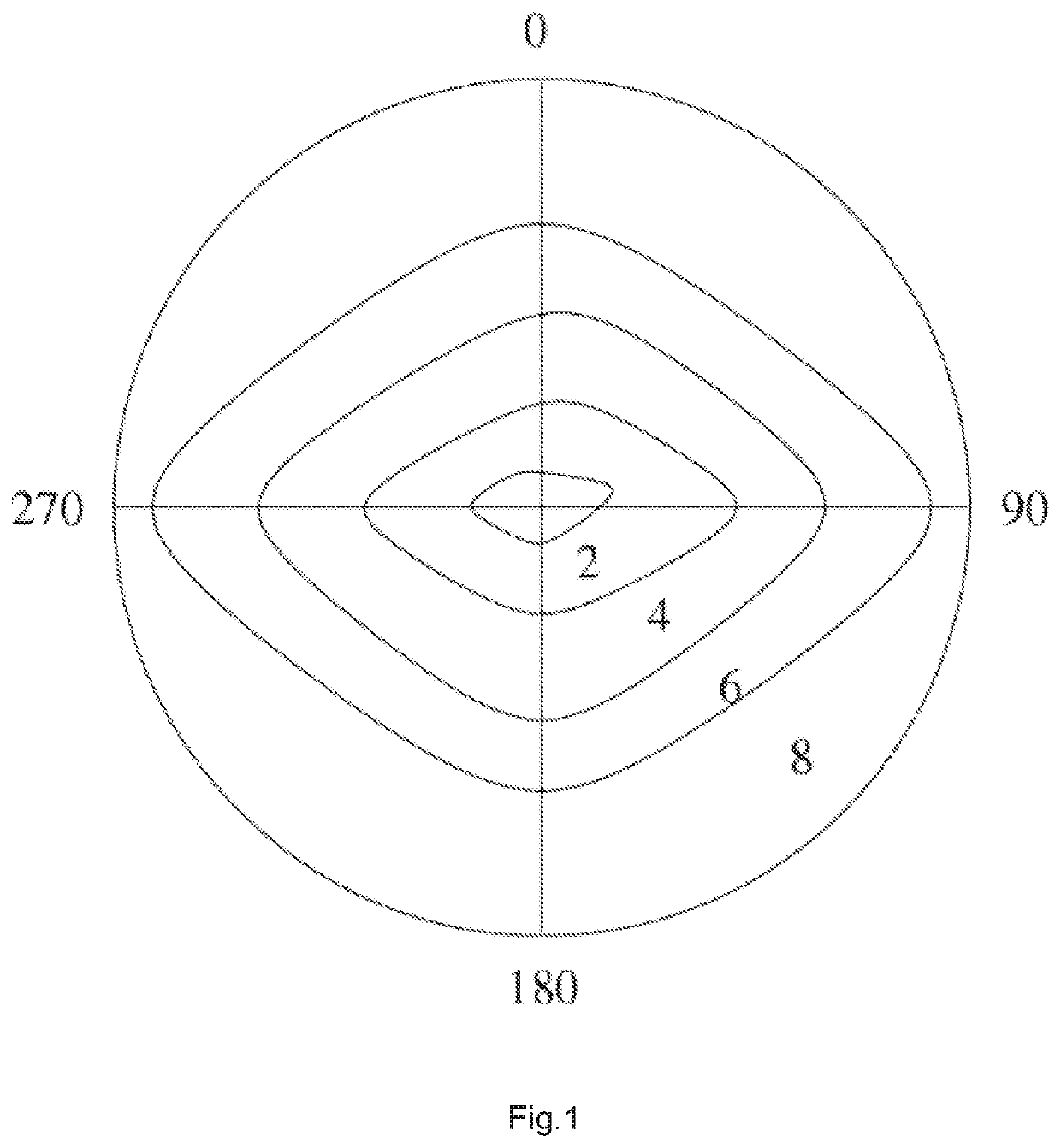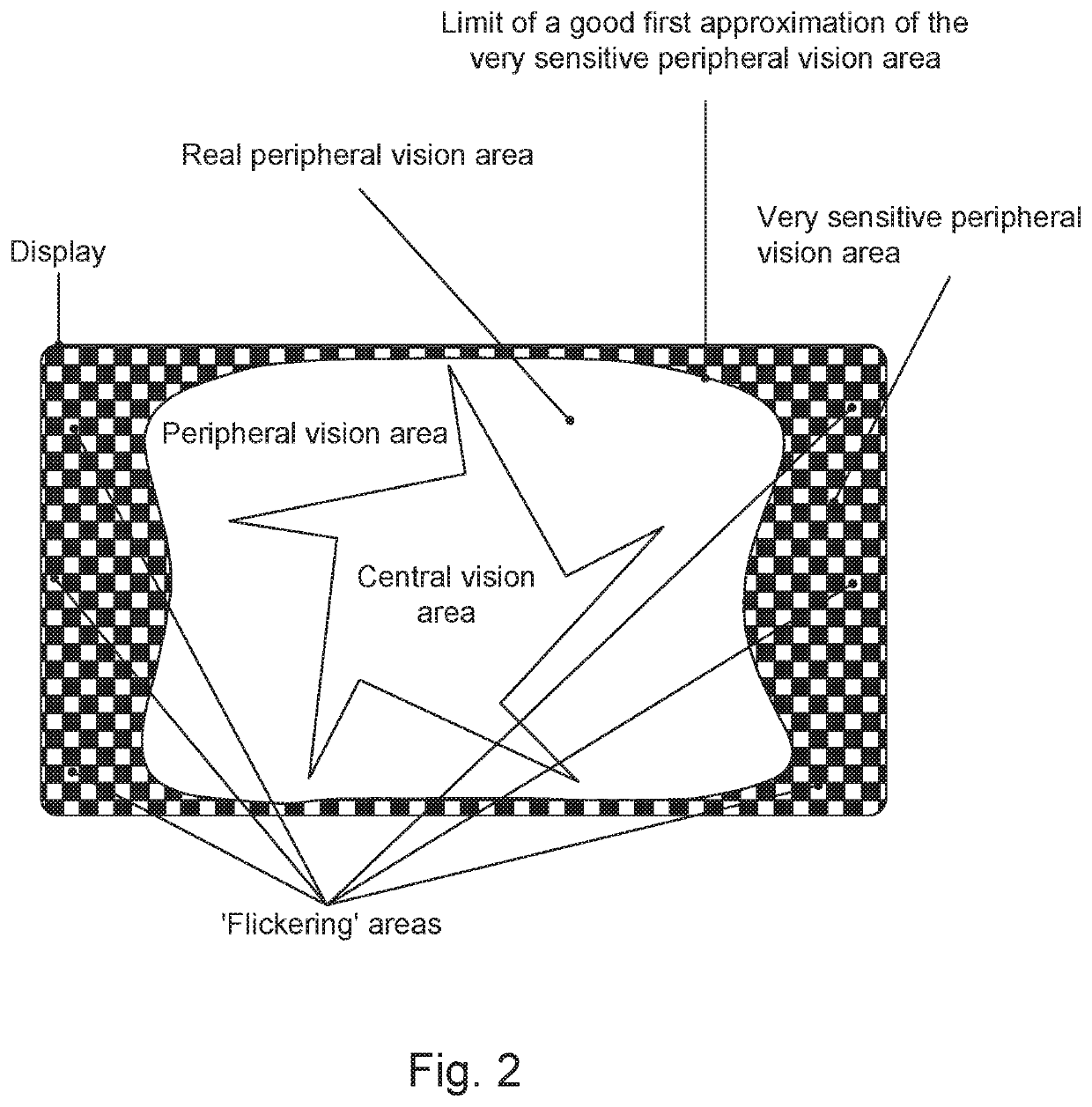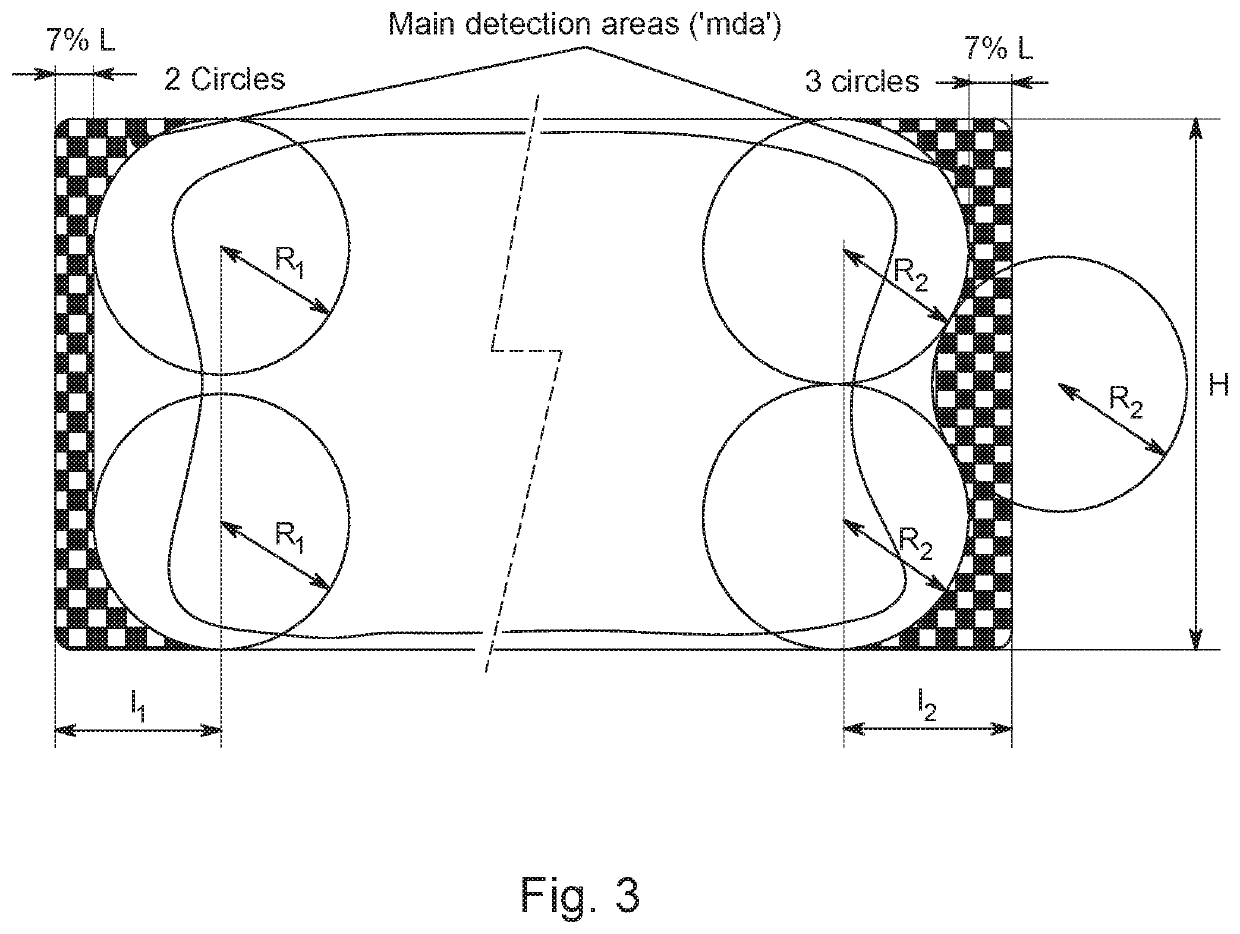Image processing method based on peripheral reduction of contrast
a processing method and peripheral technology, applied in image enhancement, image analysis, instruments, etc., can solve the problem that a near-eye display or a tv display device is more likely to cause flicker
- Summary
- Abstract
- Description
- Claims
- Application Information
AI Technical Summary
Benefits of technology
Problems solved by technology
Method used
Image
Examples
first embodiment
[0040]the method for processing images of a video sequence will now be described in reference to FIG. 9, in the context of displaying these images on a screen of a display device, having a width L and a height H.
[0041]Images of the video sequence are all defined in a same geometrical format, here a rectangular format delimited by a top and a bottom horizontal side of width L and a left and a right vertical side of height H. The horizontal sides are larger than the vertical sides.
[0042]In a first step of this first embodiment, peripheral areas of images are defined, preferably at least one peripheral area PL on the left side and at least one peripheral area PR on the right side.
[0043]In a first variant of this first step illustrated on the left part of FIG. 3, the inner border of this peripheral area is anchored on four circles of radius R1 that are disposed symmetrically in reference to the center of the image, each tangent to a horizontal side of the image and centered at a given d...
second embodiment
[0076]In the method for processing images of a video sequence illustrated on FIG. 9 too, the peripheral areas are divided in N subregions 1, 2, . . . , i, . . . , N.
[0077]In an example, these subregions are identical squared areas, each of then having a side for instance equal to 3.%*L, where L is the width of the image.
[0078]Then, a contrast value Ri is computed for each subregion i, providing then a local contrast value for this subregion.
[0079]The local contrast Ri of a subregion i is for instance based on a ratio defined as:
[0080]the difference L1090 between the lowest luminance of the last decile of the distribution of luminance values of all pixels of this subregion and the highest luminance of the first decile of this distribution,
[0081]divided by the difference L100% between the highest luminance and the lowest luminance of this distribution,
[0082]wherein the last decile corresponds to the highest luminance values of the distribution and the first decile corresponds to the l...
PUM
 Login to View More
Login to View More Abstract
Description
Claims
Application Information
 Login to View More
Login to View More - R&D
- Intellectual Property
- Life Sciences
- Materials
- Tech Scout
- Unparalleled Data Quality
- Higher Quality Content
- 60% Fewer Hallucinations
Browse by: Latest US Patents, China's latest patents, Technical Efficacy Thesaurus, Application Domain, Technology Topic, Popular Technical Reports.
© 2025 PatSnap. All rights reserved.Legal|Privacy policy|Modern Slavery Act Transparency Statement|Sitemap|About US| Contact US: help@patsnap.com



